I have a complicated relationship with Phragmites. Though some strains are native to North America, much more vigorous invasive varieties from Eurasia haven taken over many of our wetlands and proven to be extremely difficult to control. Dense “reed stands” of Phragmites with their dramatic seed plumes waving in the breeze can be strikingly beautiful but they’re a huge problem in our wetlands.
These plants produce two toxins (gallic acid and mesoxalic acid) that kill native species of wetland plants that provide much more useful habitat for waterfowl and other wildlife.
As a result, Phragmites chokes out our native vegetation and in many areas it’s so thick and expansive that it resembles Phragmites monoculture. This is one of my favorite spots at Bear River Migratory Bird Refuge in mid-June – as you can see, Phragmites has essentially displaced every native plant species.
And speaking of invasives, the purplish color on the mountains in the background is Cheat Grass – another extremely problematic non-native species.
Here’s the same view the following April, before the new green Phragmites shoots have begun to appear. To my eye these dense reed stands are often strikingly beautiful and can provide appealing settings for photography but the price to be paid is a steep one – degraded wetlands and coastal areas where native animals and plants are crowded out, reduced access to shorelines for human recreational activities and fire hazards from massive amounts of dried vegetation.
Wetland managers go to great lengths in attempting to control phragmites – using methods such as deliberate burning, herbicides, cutting, mowing and disking but their efforts are largely a losing proposition, Phragmites spreads rapidly as their rhizomes (horizontal roots) grow more than 6 feet every year and can be longer than 60 feet. When broken mechanically (plowing for example) each rhizome piece can grow into a new plant. And each plant produces roughly 2000 seeds every year.
Managers also run grazing cattle onto the wetlands in an effort to control the phrags – a practice I detest (though I do understand its necessity).
To be fair, some birds do use Phragmites as habitat. Several species of swallows often perch in phrags in large numbers, some waterfowl nest in the reed stands and other birds use phrags for cover but compared to our native wetland plant species the habitat provided by phragmites is much degraded.
All that said, I really enjoy flight shots of birds with Phragmites in the background. Here the phrags are covered by an early morning frost and the Barn Owl is hunting the edges of the reed stand for voles.
But my experience last week at Farmington Bay WMA reminded me of another reason why phrags can be inconvenient, at least for photographers (and anyone fond of breathing…)
It was a moderately windy day at the bay and the puffy and light Phragmites seeds were thick in the air, blowing everywhere. They got in our nostrils and our eyes, making both breathing and seeing a challenge. The interior of my pickup is still covered in them – particularly (for some reason) the headliner. This juvenile Red-tailed Hawk was kiting in the wind and gave me a look back from too far away for great image quality but all those fuzzy white spots in the background? – you guessed it, Phragmites seeds.
The seeds blew into all the ponds, creating an unsightly setting for this Horned Grebe about to swallow a fish. In many areas of the ponds the wind had blown the seeds into thick mats which completely covered the water surface.
It was a frustrating day at Farmington Bay.
Ron


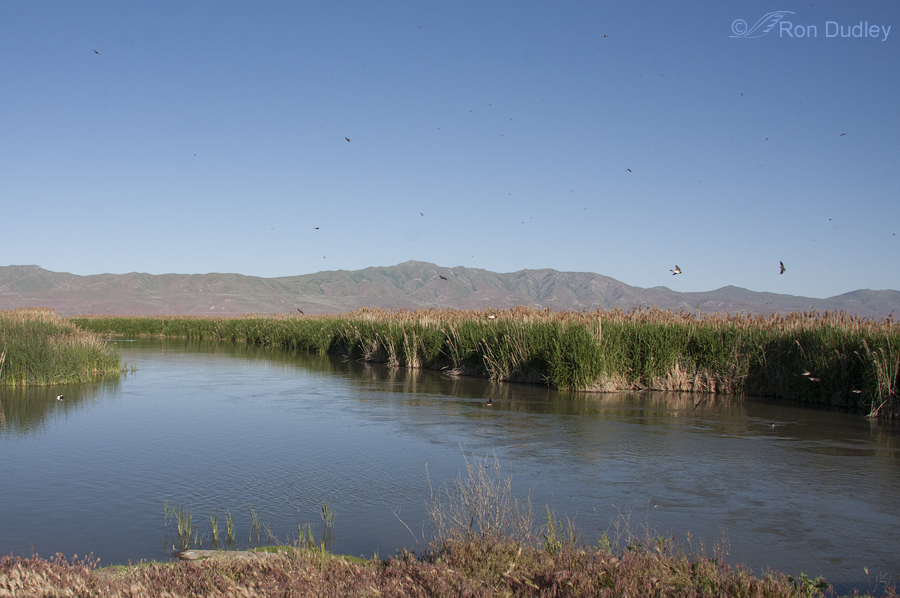
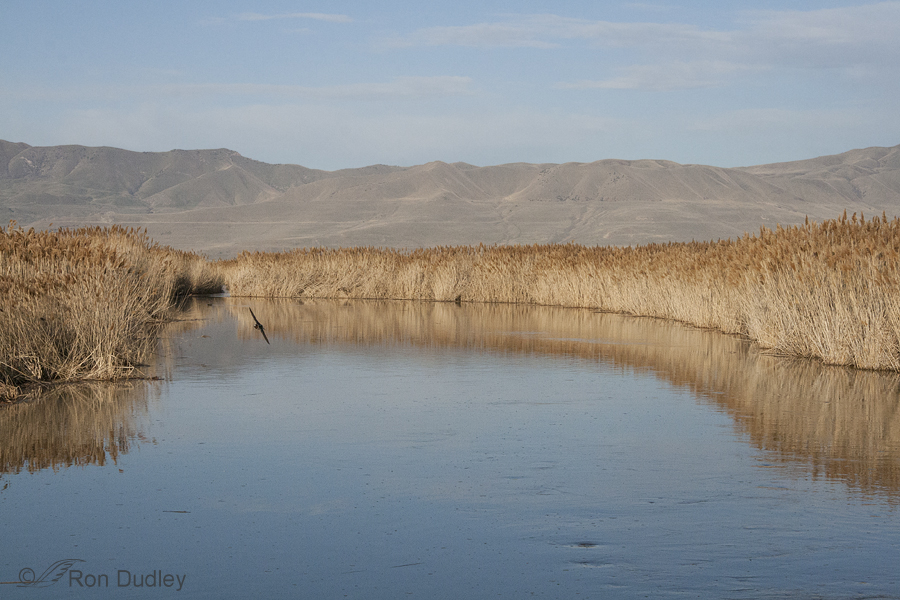
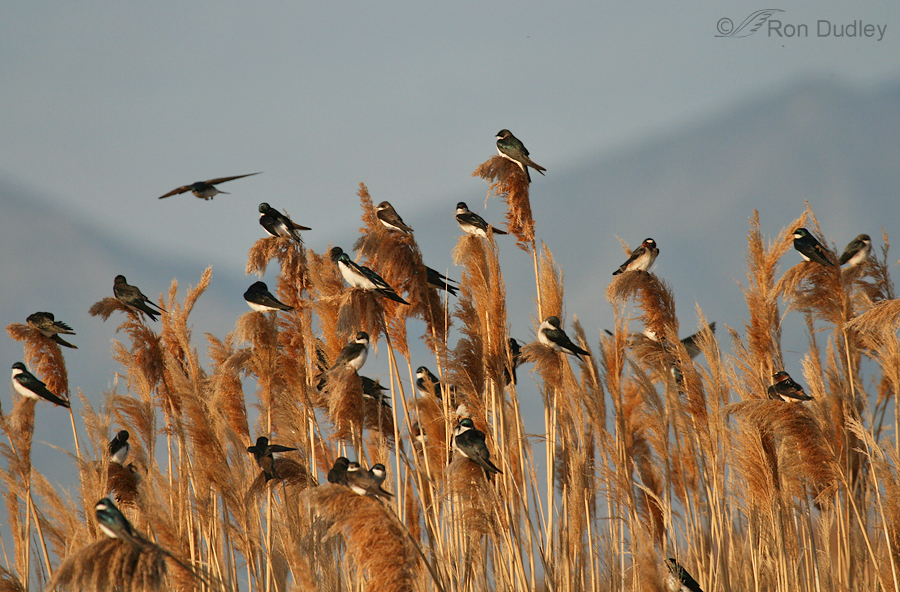
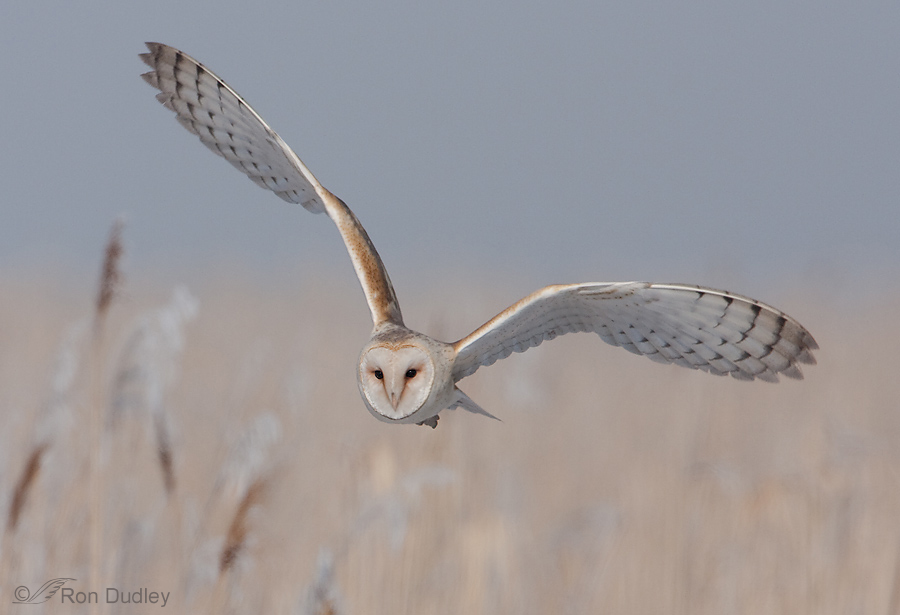
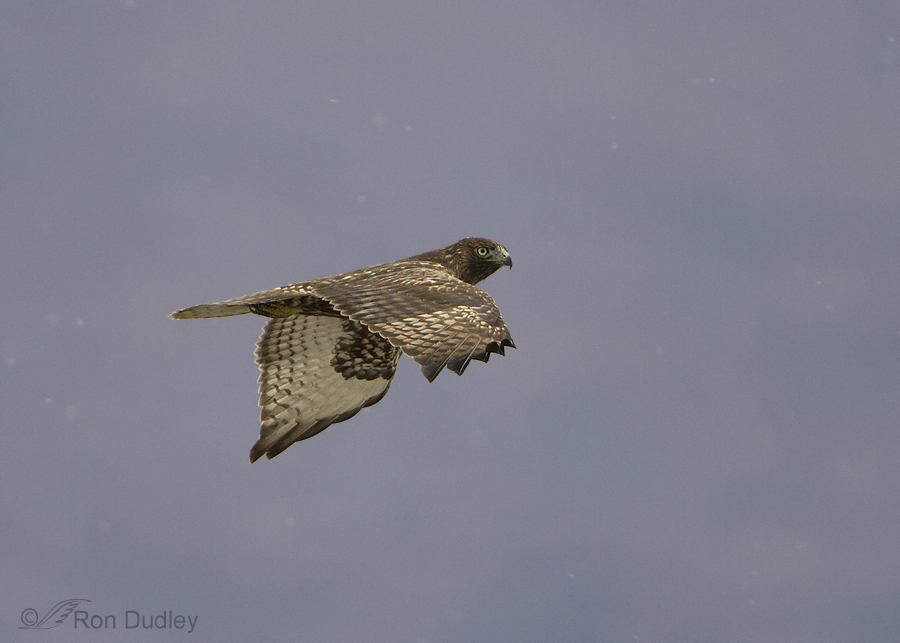
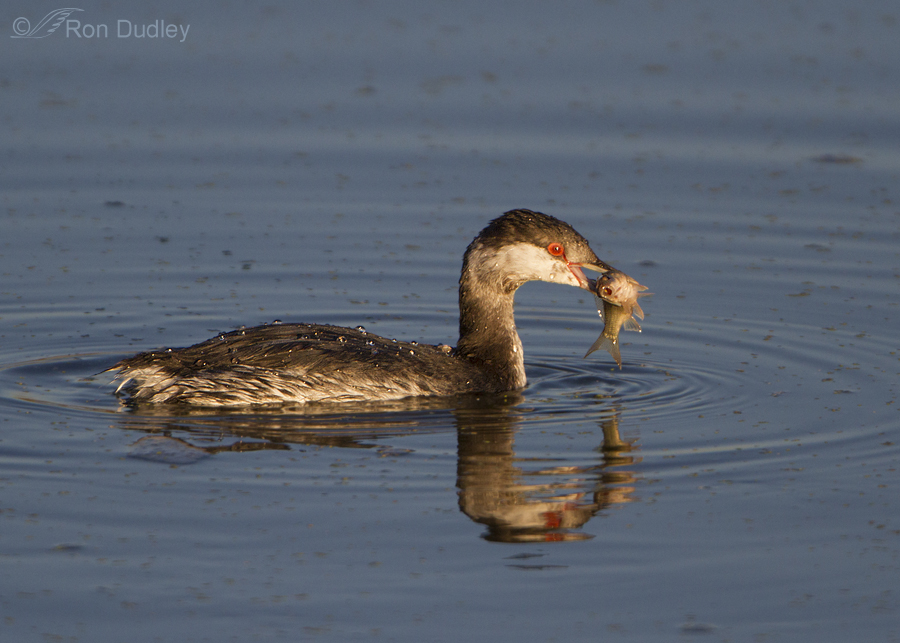
I had not been aware of the problems with Phragmites before, and have never seen stands of them like the ones in your photos. Thank you for increasing our awareness of the problems in our environment.
Control of aquatic weeds like Phragmites, Typha (cattails), Arundo, or water hyacinth is a never ending process. It must be done at a real profit to be sustainable. This is all high quality biomass waiting to be biofuel. If we do not control them they will silt away our lakes, as can be seen in Africa’s Lake Chad. This is an excessively renewable resource that must be exploited to be controlled.
I love the swallow image. They’re (phragmites) an invasive species in some wetlands here too, as well as willows in a spot I was just this afternoon.
Good post, Ron. Makes me tired thinking of all the invasive plant removal done over the years and to look at the same areas now and still see the invasives winning the battle. But, we need to educate (just as you are doing!), work and have faith we’re making a difference.
We have significant problems with introduced vegetation (and birds and animals too) here as well. Each introduced success story spells a failure for something native. Which I regret. Badly.
And, as I typed, it occurred to me the caucasion invasion of Australia also spelled out death, destruction and degradation of our indigenous people.
Sigh.
Invasives always come at a cost, Elephant’s Child – no matter the species…
Excellent essay Ron!! Growing up along the coast the only way Phrags are kept in balance there is via saltwater. They will grow along saltwater but primarily where there is a freshwater inlet or seep to the saltwater. Phrags don’t like salt. Understand that can’t be done in a freshwater habitat, and I understand the problem. My feeling is that birds use it because it is there not because it is a better habitat than Cattails or other wetland plants. I would love to see a non-toxic way to rid our area of Phragmites. both inland and along the coast.
“Phrags don’t like salt”.
They certainly don’t, Dick. You never see them around the edges of the Great Salt Lake unless, as you say, there’s fresh water flowing in to dilute the water. But then the lake is so very saline that only true halophites can grow anywhere near it.
Again wonderful shots Ron and I totally agree. They are way too invasive to be tolerated. When will humans realize that non native plant material, inevitably creates a problem!
Charlotte
Thanks, Charlotte.
Thanks for the interesting information on phragmites (and the, as always, stellar images). I’ll be more cogizant of the vegetation in wetlands in future.
You’re very welcome, Justine. And thank you.